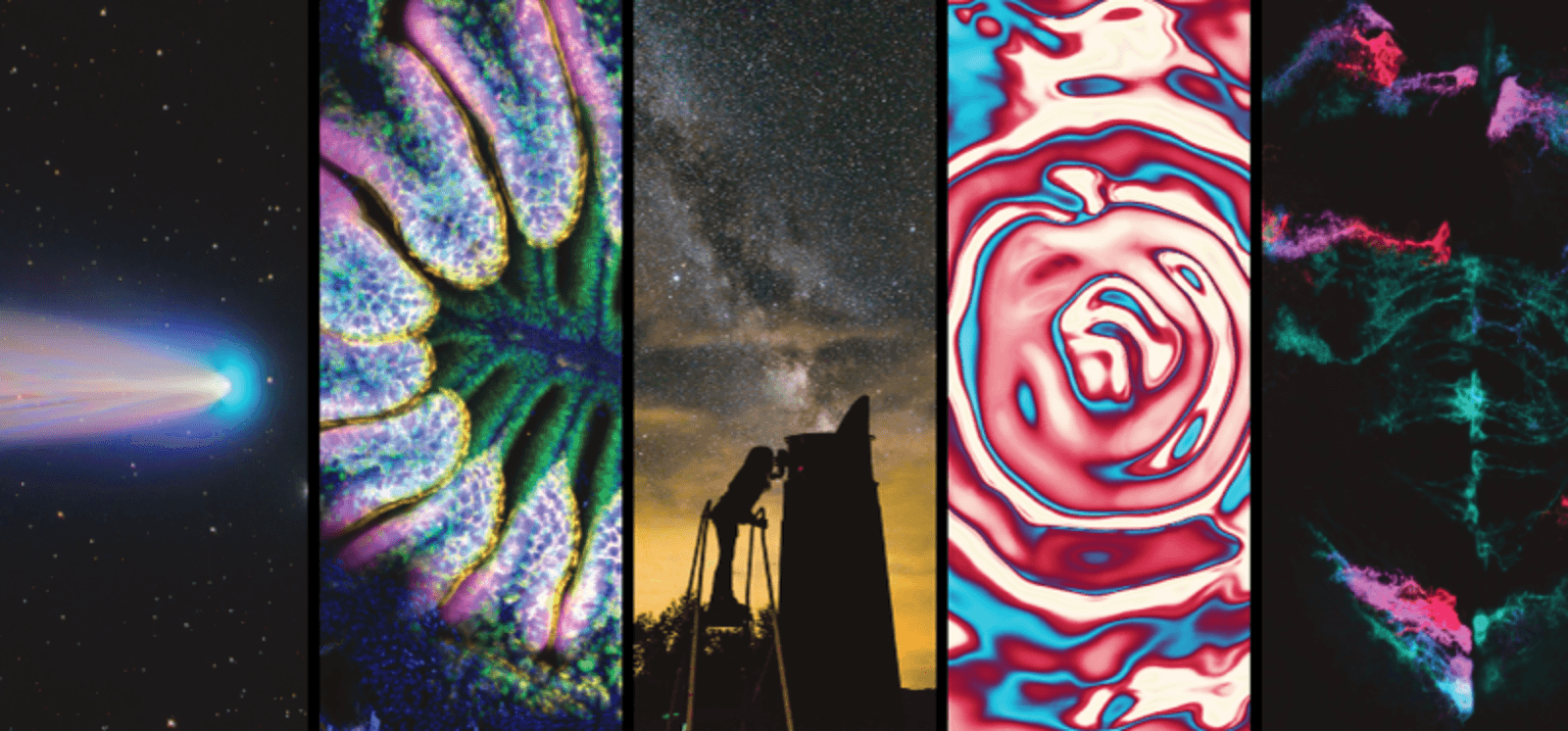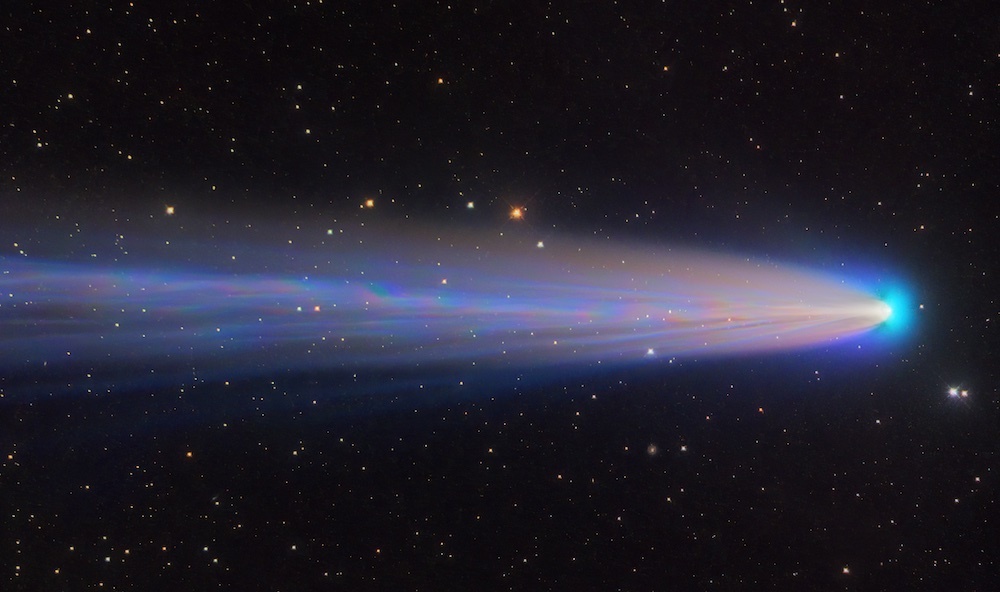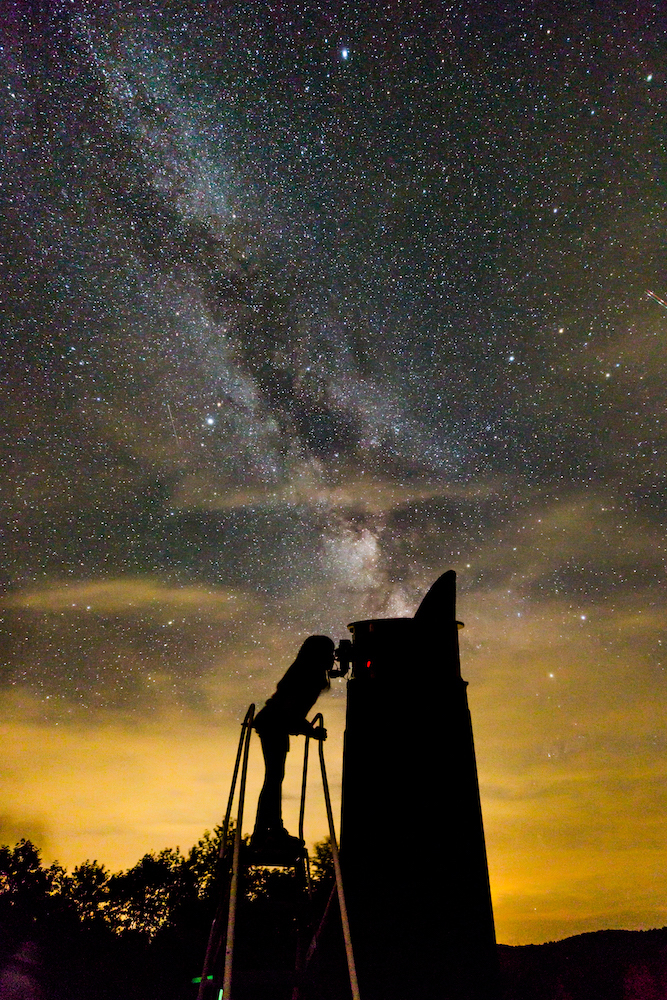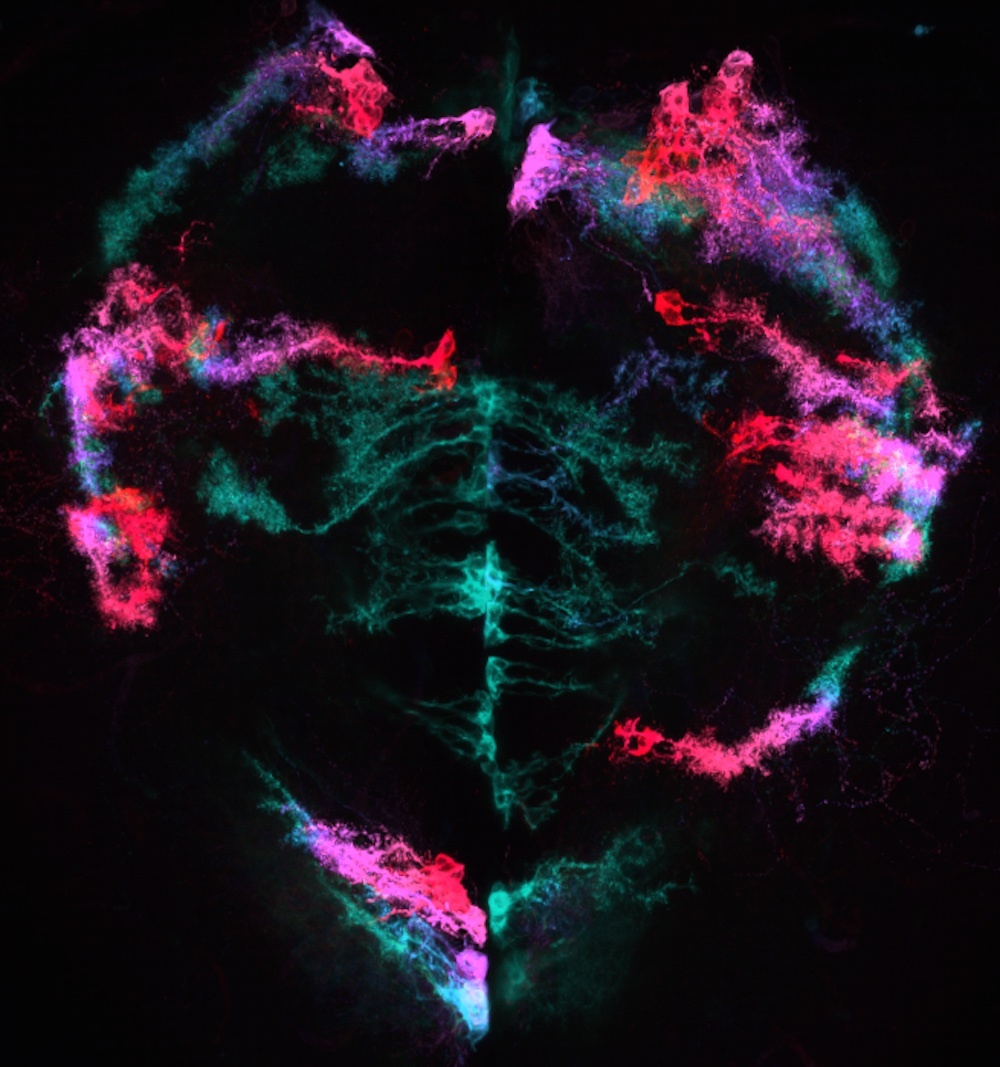Visions of Science
Celebrating images from Kavli Institutes

At the 20 Kavli Institutes, scientists push the frontiers of science, seeking answers to fundamental questions in astrophysics, nanoscience, neuroscience, and theoretical physics. In the process of collecting and analyzing troves of data, scientists also generate images that are as beautiful as they are information rich. This year, we invited members of the Kavli Institutes to share examples of compelling images from their research. Below is a selection of the most awe-inspiring images representing a range of fields and technologies.

Comet C/2021 A1 (Leonard)
At the Kavli Institute for Astronomy and Astrophysics at Peking University, Zhuokai Liu used a small remote telescope in Chile to capture this 30-minute-exposure view of Comet C/2021 A1 (Leonard), a long period comet discovered in 2021. Due to the telescope's optical filters, the quickly changing tail appears rainbow-like.

The Zebrafish Olfactory Organ
At the Kavli Institute for Systems Neuroscience at NTNU in Trondheim, Norway, Mert Ege used confocal microscopy to capture this image of the zebrafish olfactory organ. Neurons expressing the Foxj1b gene are shown in green; multiciliated cells expressing Foxj1a are fuchsia; acetylated tubulin in cilia on multiciliated cells are yellow; and cell nuclei are stained blue.

Little Girl, Big Telescope
Gabor Furesz from the MIT Kavli Institute for Astrophysics and Space Research photographed nine-year-old Miriam as she was captivated by deep sky objects during the annual Stellafane convention in Vermont. “Experiences like this can plant and nurture the seed of appreciating science for generations to come,” said Furesz.

Swirling Superfluid
At the Kavli Institute at Cornell for Nanoscale Science, Xiaolong Liu, along with colleagues Rahul Sharma and J. C. Seamus Davis, used an atomic-resolution scanned Josephson tunneling microscope to capture experimentally measured superfluid flow around an Abrikosov vortex in superconducting NbSe2. This is the first image revealing the flow patterns of a charged superfluid around a quantum vortex core at the atomic level.

Astroglia
At the Kavli Institute for Systems Neuroscience at NTNU in Trondheim, Norway, Emre Yaksi and Bram Serneels captured these astroglial cells in a four-week-old juvenile zebrafish brain using a Zeiss confocal microscope. The colors encode dorso-ventral position of astroglia, where the range of colors relates to the cells’ depth, in a transgenic zebrafish line.